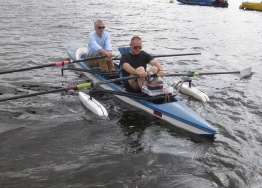Musculoskeletal Health following SCI
This section covers the most recent scientific studies that have led to a better understanding of the mechanisms behind the loss of musculoskeletal health following SCI.
The articles are presented under the year of publication, newest first in descending date order. Each post includes the study title, contributing authors, the journal the article was published in, and a précis of the study or review findings.
Schlecht SH, Pinto DC, Agnew AM, Stout SD. Brief Communication: The effects of Disuse on the Mechanical Properties of Bone: What Unloading Tells Us About the Adaptive Nature of Skeletal Tissue. American Journal of Physical Anthropology 2012; 1-7.
Study Findings
A number of indicators of bone metabolism were studied including osteon density (the single functional unit of compact cortical bone), osteon size, bone mass, and bone area distribution within the lower limbs of two participant study groups; two subjects with tetraplegia were compared with 28 non-injured age-matched subjects. Although the study was limited by relatively small subject sizes, the findings suggest that bones subject to long-term disuse have lower osteon densities compared to non-injured individuals. This reflects lower bone remodelling rates which are potentially related to the reduced muscle-induced strain levels. In addition, the immobilized bone showed a reduced cortical area (compact bone) the result of bone resorption (bone loss).
McCarthy ID, Bloomer Z, Gall A, Keen R, Ferguson-Pell M. Changes in the structural and material properties of the tibia in patients with spinal cord injury. Spinal Cord 2011 Apr; 50(4): 333-337.
Study Findings
A total of thirty-one subjects were measured; eight with acute SCI, nine with chronic SCI, and fourteen non-SCI controls. Three peripheral quantitative computerised tomography (pQCT) scans were performed from the tibial plateau at 2%, 34%, and 96%. Structural measures of bone were calculated along with volumetric bone mineral density (vBMD) at all three levels, and muscle cross-sectional area was also measured at the diaphyseal (mid-shaft) level. The study concluded that there were clear changes of both structure and material at all levels in the chronic SCI patients. These changes were consistent with specific adaptations to reduced local mechanical loading conditions.
Eser P, Frotzler A, Zehnder L, Wick L, Knecht H, Denoth J, Schiessl H. Relationship between the duration of paralysis and bone structure: a pQCT study of spiunal cord injured individuals. Bone 2004; 34: 869-880.
Study Findings
This study describes the changes in bone loss of trabecular (spongy cancellous bone), cortical (compact bone), and bone geometry in a large group of individuals with spinal cord injury (SCI). The SCI group comprised 89 motor complete (American Spinal Injury Association Impairment Scale A or B) males, 24 with tetraplegia and 65 with paraplegia. Time post injury ranged from 2 months to 50 years. 3D peripheral quantitative computed tomography (pQCT) imaging equipment was use to measure the distal epiphyses (long bone ends) and diaphyses (midshafts) of the femur and tibia in the lower limbs and radius in the upper limbs. 21 non-injured males of the same age range were used as a reference group.
When compared to the non-injured group, the femur and tibia in the SCI group showed a rapid loss of bone mass, total and trabecular bone mineral density (BMD) of the epiphyses, and cortical cross-sectional area of the diaphyses. A new slower steady state bone loss was reached after 3 to 8 years depending on the parameter measured. Bone mass loss in the distal epiphyses was approximately 50% in the femur and 60% in the tibia, whilst the midshafts bone loss was approximately 35% in the femur and 25% in the tibia. Loss of bone mass was due to reduced BMD in the distal epiphyses, and reduction of cortical wall thickness in the midshafts by endosteal (inner cortical surface) resorption (bone loss). In comparison, the distal radial epiphyses in individuals with paraplegia showed no change in bone mass, but a trend towards increased midshaft diameter which appeared to be due to periosteal (outer cortical surface) apposition (bone gain) as a result of increased loading of the arms.
Return to Scientific Articles





